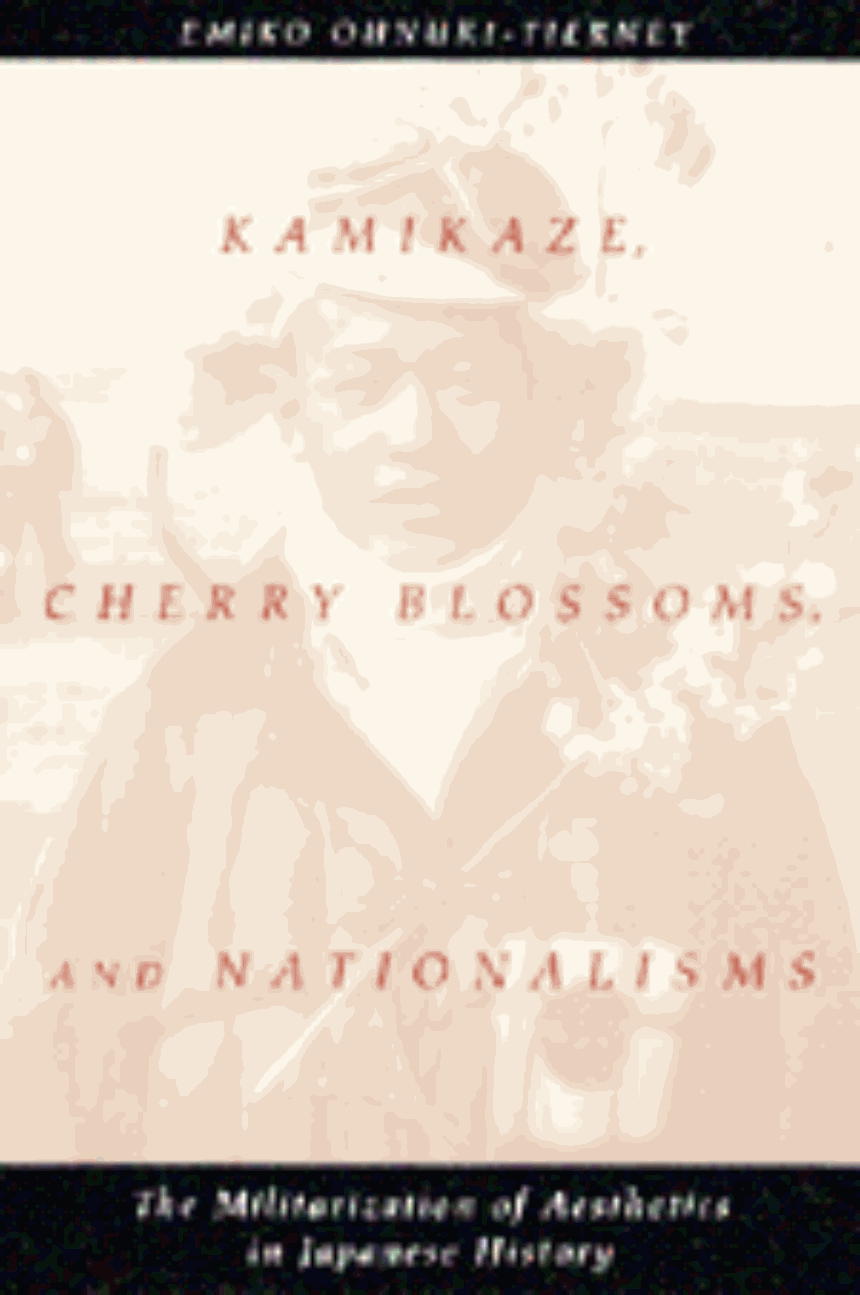Kamikaze, Cherry Blossoms, and Nationalisms
The Militarization of Aesthetics in Japanese History
9780226620916
9780226620688
Kamikaze, Cherry Blossoms, and Nationalisms
The Militarization of Aesthetics in Japanese History
Why did almost one thousand highly educated "student soldiers" volunteer to serve in Japan’s tokkotai (kamikaze) operations near the end of World War II, even though Japan was losing the war? In this fascinating study of the role of symbolism and aesthetics in totalitarian ideology, Emiko Ohnuki-Tierney shows how the state manipulated the time-honored Japanese symbol of the cherry blossom to convince people that it was their honor to "die like beautiful falling cherry petals" for the emperor.
Drawing on diaries never before published in English, Ohnuki-Tierney describes these young men’s agonies and even defiance against the imperial ideology. Passionately devoted to cosmopolitan intellectual traditions, the pilots saw the cherry blossom not in militaristic terms, but as a symbol of the painful beauty and unresolved ambiguities of their tragically brief lives. Using Japan as an example, the author breaks new ground in the understanding of symbolic communication, nationalism, and totalitarian ideologies and their execution.
Drawing on diaries never before published in English, Ohnuki-Tierney describes these young men’s agonies and even defiance against the imperial ideology. Passionately devoted to cosmopolitan intellectual traditions, the pilots saw the cherry blossom not in militaristic terms, but as a symbol of the painful beauty and unresolved ambiguities of their tragically brief lives. Using Japan as an example, the author breaks new ground in the understanding of symbolic communication, nationalism, and totalitarian ideologies and their execution.
428 pages | 10 halftones | 6 x 9 | © 2002
Anthropology: Cultural and Social Anthropology
Asian Studies: East Asia
History: Military History
Philosophy: Philosophy of Society
Awards
Kiriyama Pacific Rim Foundation: Kiriyama Pacific Rim Book Prize
Shortlist
